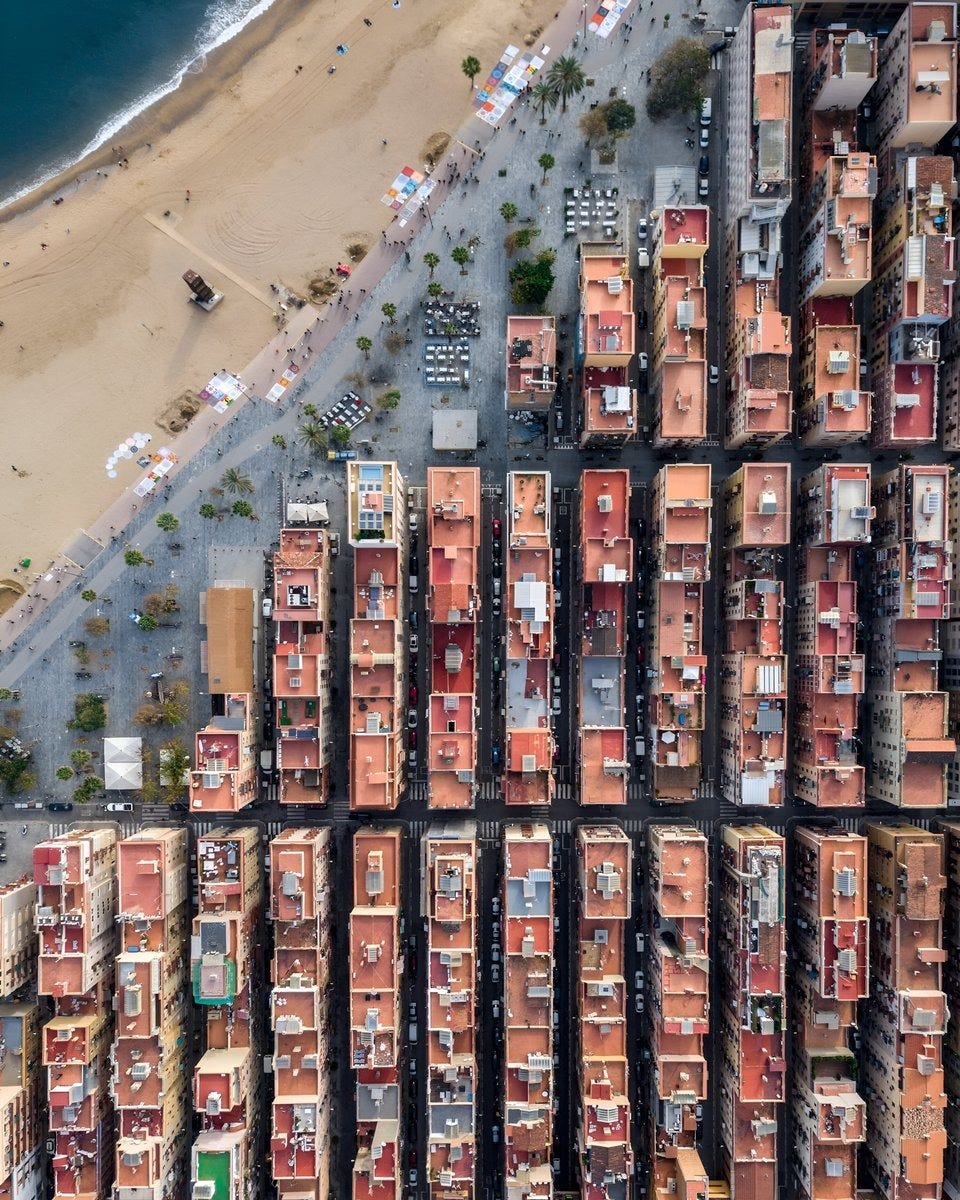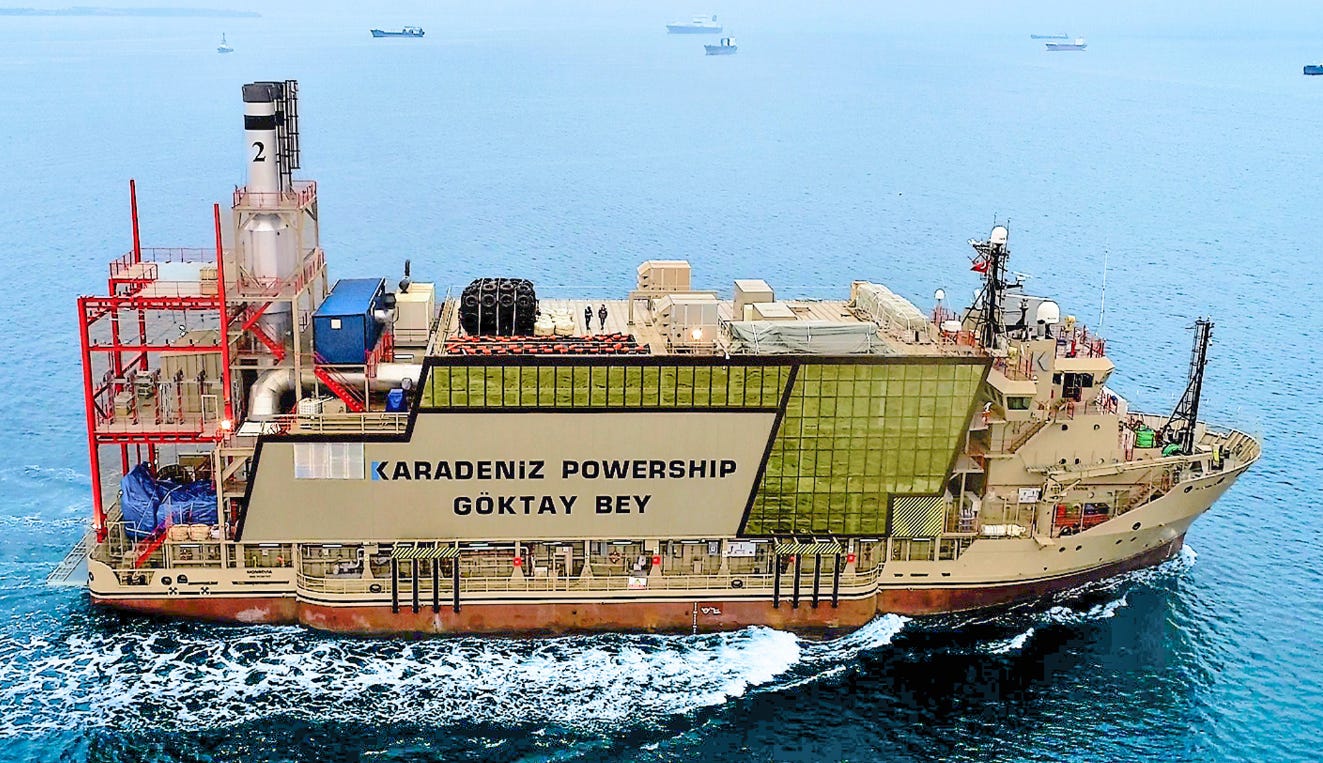Reading List 10/25/25
Jet engine-powered data centers, Brightline train deaths, cracks in a super thin skyscraper, a Chinese particle accelerator, and more.

Welcome to the reading list, a weekly roundup of news and links related to buildings, infrastructure, and industrial technology. This week we look at jet engine-powered data centers, Brightline train deaths, cracks in a super thin skyscraper, a Chinese particle accelerator, and more. Roughly 2/3rds of the reading list is paywalled, so for full access become a paid subscriber.
Some housekeeping items this week:
No essay this week, but a longer piece on how Britain lost its shipbuilding industry will be out next week.
My book’s Amazon listing is still goofed up (though I’m hopeful it will get fixed soon) — it’s still only available from 3rd party sellers with very long shipping times. I’d recommend ordering from Barnes and Noble or Bookshop in the meantime.
The book had a nice review in the Wall Street Journal.
Jet engines for data centers
Gas turbine power plants and jet engines share a lot of similarities, to the point where some gas turbine power plants are “aeroderiviatives” which are based on the design of a jet engine. Because the backlog for new gas turbine power plants is so long, and because some data centers want their power now, some data center buildings are turning to repurposed jet engines to supply power. Via Data Center Dynamics:
The PE6000 gas turbines are made through retrofitting old CF6-80C2 jet engine cores and matching them with newly manufactured aero-derivative parts made by ProEnergy or its partners.
To make jet engines suitable for use as power generators, they are modified with an expanded turbine section to convert engine thrust into shaft power, a series of struts and supports to mount them on a concrete deck or steel frame, and new controls. Following assembly, the engines can supply 48MW of capacity.
“We have sold 21 gas turbines for two data center projects amounting to more than 1GW,” said Landon Tessmer, VP of commercial operations at ProEnergy. “Both projects are expected to provide bridging power for five to seven years, which is when they expect to have grid interconnection and no longer need permanent behind-the-meter generation.
Powerships
In other “unusual sources of power” news, this week I learned about powerships, which are basically floating power plants built into the hull of a ship. One such ship, provided by the firm Karpowership, was from 2018 until earlier this year providing 40% of the electricity for the west African country The Gambia:
In February 2018, Karpowership signed a 2-year contract with National Water and Electricity Supply Company Ltd. of the Gambia to deploy a Powership of 36 MW. In 2020 the contract was extended for 2 more years and in May 2022 extended for another 3 years. Karpowership has been operational in the Gambia since 2018 and supplying 40% of the Gambia’s total electricity need. In 2017, a year before Karpowership began its operations, only 56% of the population had access to electricity. Today, that figure has increased to 65%.

Brightline train deaths
Related to our recent discussions of pedestrians getting killed by cars, apparently the Brightline train in Florida has become notorious for killing pedestrians. As with pedestrian deaths, the reasons for the large number of people killed by the train is unclear. From the Atlantic:
What the Brightline is best known for is not that it reflects the gleam of the future but the fact that it keeps hitting people. According to Federal Railroad Administration data, the Brightline has been involved in at least 185 fatalities, 148 of which were believed not to be suicides, since it began operating, in December 2017. Last year, the train hit and killed 41 people—none of whom, as best as authorities could determine, was attempting to harm themselves. By comparison, the Long Island Rail Road, the busiest commuter line in the country, hit and killed six people last year while running 947 trains a day. Brightline was running 32.
In January 2023, the National Transportation Safety Board found that the Brightline’s accident rate per million miles operated from 2018 to 2021 was more than double that of the next-highest—43.8 for the Brightline and 18.4 for the Metra commuter train in Chicago. This summer, the Miami Herald and a Florida NPR station published an investigation showing that someone is killed by the train, on average, once every 13 days.
Battery storage and rolling blackouts
We’ve talked a few times about the benefits that battery storage can bring to electrical grids. By storing excess electricity, batteries act as a buffer, making it easier to match supply and demand and reducing the need for expensive “peaker” power plants. We previously noted that the rise of battery storage has been credited with reducing the risk of power outages in Texas:
In 2023, Texas’ ERCOT issued 11 conservation calls (requests for consumers to reduce their use of electricity), including 7 during late August, to avoid reliability problems amidst high summer temperatures. But in 2024 it issued no conservation calls during the summer. In part this was due to the rapid increase in battery storage, which rose by 4 gigawatts (roughly 50%) between January and June 2024.
It seems like something similar has happened in California. The Los Angeles Times has a good piece about the rise of battery storage in California and the simultaneous decline in rolling blackouts:
For decades, rolling blackouts and urgent calls for energy conservation were part of life in California — a reluctant summer ritual almost as reliable as the heat waves that drove them. But the state has undergone a quiet shift in recent years, and the California Independent System Operator hasn’t issued a single one of those emergency pleas, known as Flex Alerts, since 2022.
Experts and officials say the Golden State has reached a turning point, reflecting years of investment in making its electrical grid stronger, cleaner and more dependable. Much of that is new battery energy storage, which captures and stores electricity for later use.
In fact, batteries have been transformative for California, state officials say. In late afternoon, when the sun stops hitting solar panels and people are home using electricity, batteries now push stored solar energy onto the grid.
California has invested heavily in the technology, helping it mature and get cheaper in recent years. Battery storage in the state has grown more than 3,000% in six years — from 500 megawatts in 2020 to more than 15,700 megawatts today.


